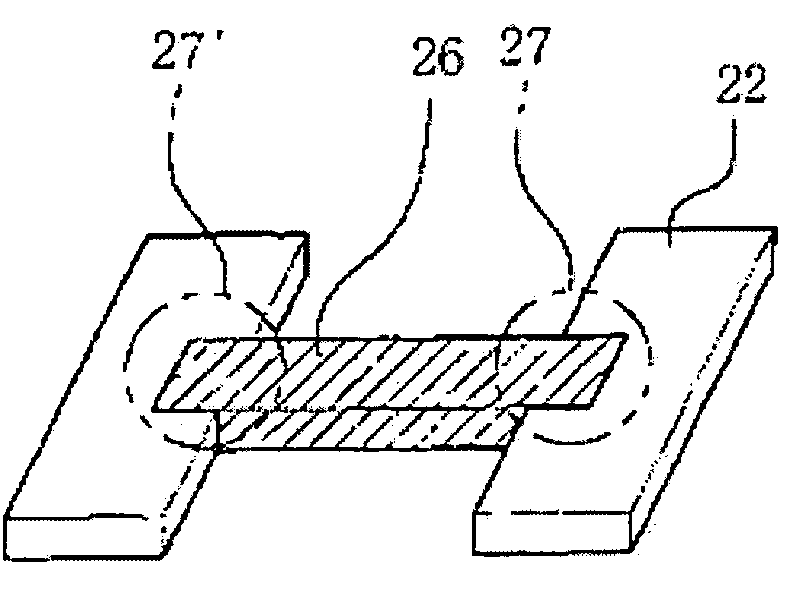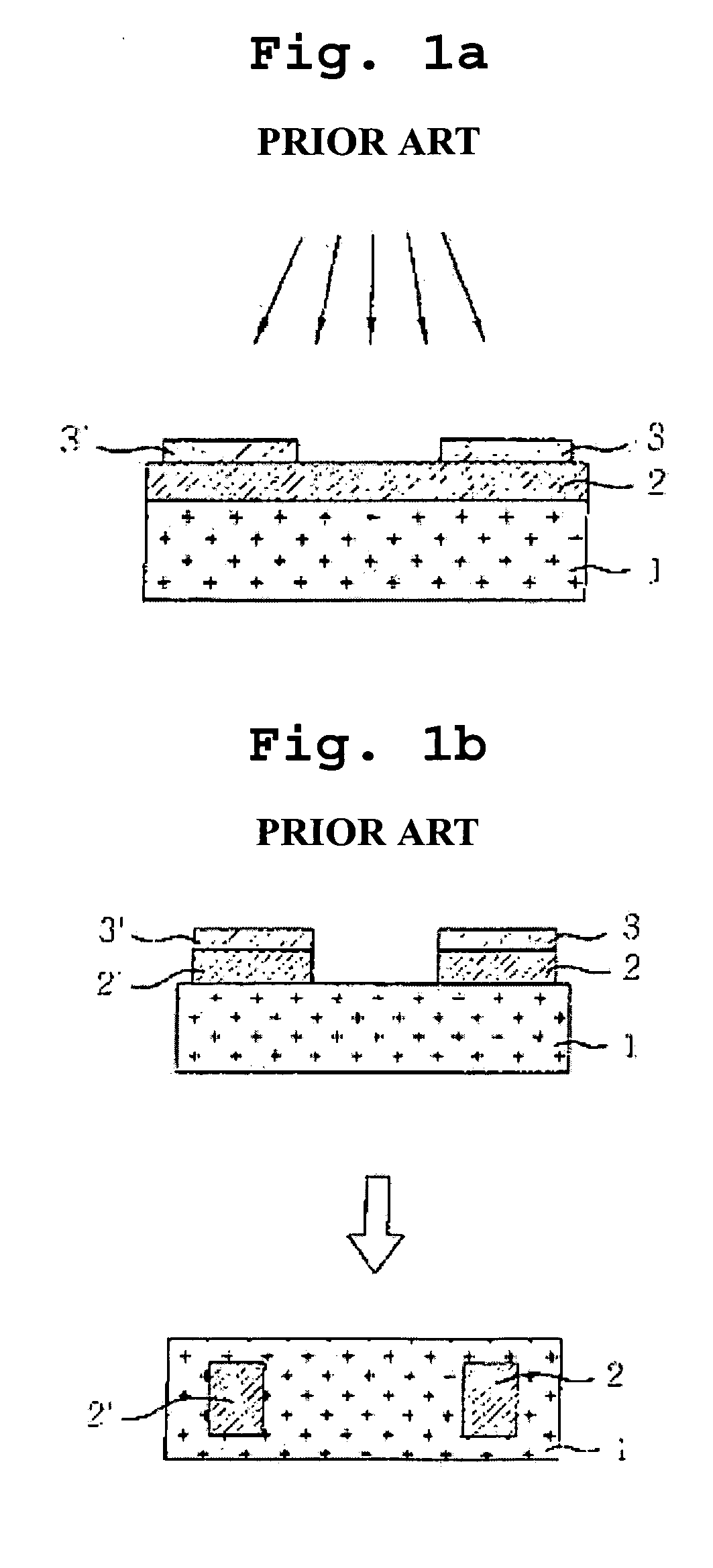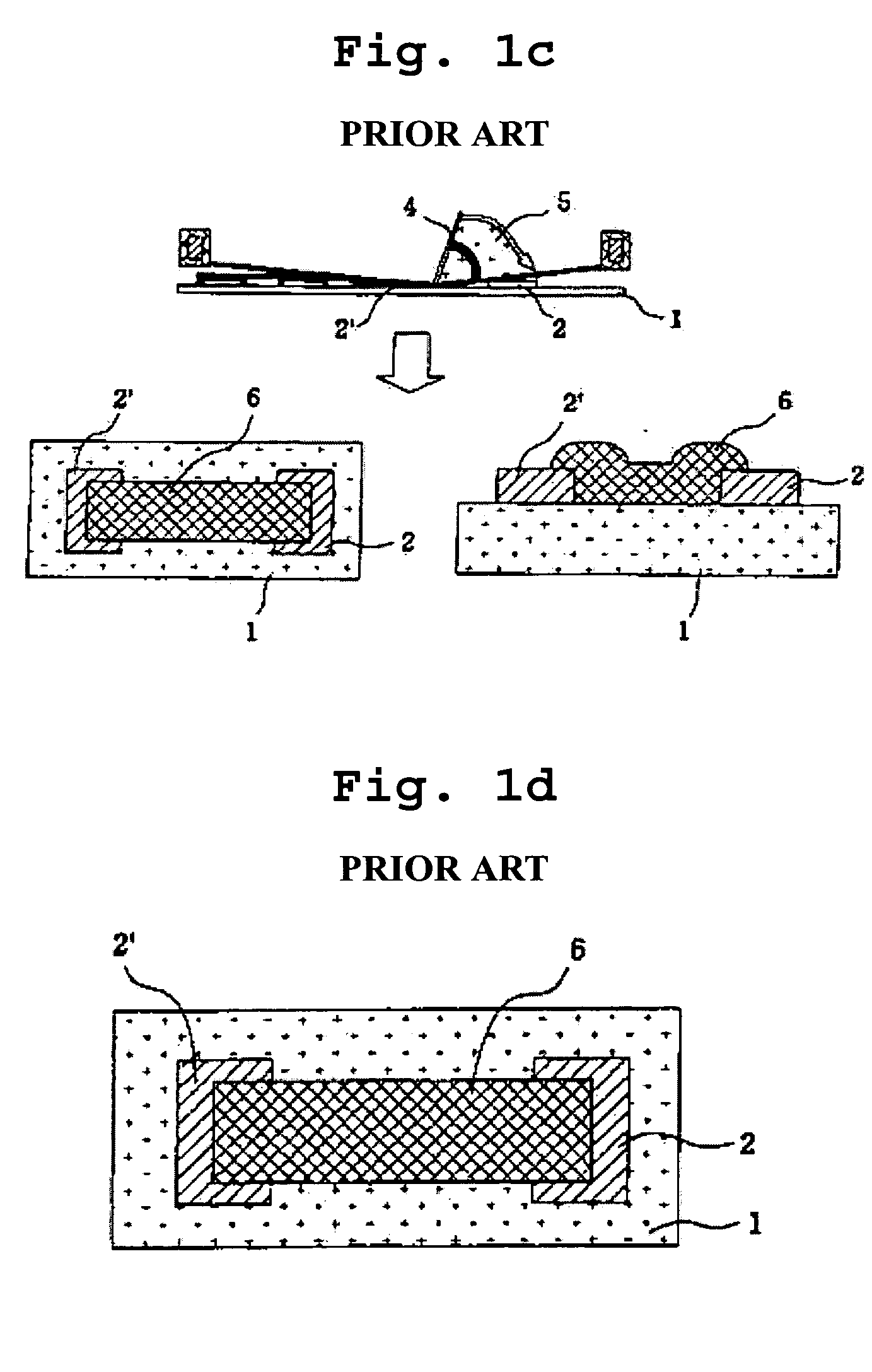Method of producing printed circuit board with embedded resistor
a technology of embedded resistors and printed circuit boards, which is applied in the direction of resistor housing/enclosement/embedding, printing, metallic pattern materials, etc., can solve the problems of not being able to directly apply resin-based substrates, and 594 is applied to only ceramic substrates. achieve the effect of improving workability
- Summary
- Abstract
- Description
- Claims
- Application Information
AI Technical Summary
Benefits of technology
Problems solved by technology
Method used
Image
Examples
first embodiment
[0063]FIGS. 2A to 2D are sectional views illustrating the production of a PCB with an embedded resistor according to the present invention.
[0064] With reference to FIG. 2A, there is illustrated a sectional view of a copper clad laminate 21 used as a base substrate. The copper clad laminate 21 is a thin laminate composed of a reinforcing base substrate 23 and a copper clad 22 coated on the reinforcing base substrate 23. Various kinds of copper clad laminates may be used to produce the PCB, but in the present invention, a FR-4 copper clad laminate, a resin-coated PCB in which a copper clad is coated on a reinforcing base substrate composed of a glass fiber added by an epoxy resin, is sufficiently competitive in terms of production costs of the copper clad laminate.
[0065] An etching resist is coated on the copper clad 22 of the copper clad laminate 21, exposed, and developed using a mask film on which a resistor paste pattern is printed to form an etching resist pattern on the copper ...
second embodiment
[0079] Referring to FIGS. 6A to 6E, after the resistor paste 66 is ground as shown in FIG. 2D or 3C, a copper plated layer is additionally layered on a copper clad 62 and resistor paste 66, and a circuit pattern is then formed on a copper clad laminate 61 according to the present invention.
[0080]FIG. 6A is a sectional view of a copper clad laminate 61 used as a base substrate. The copper clad laminate 61 is a thin laminate composed of a reinforcing base substrate 63 and the copper clad 62 coated on the reinforcing base substrate 63. Various kinds of copper clad laminates may be used to produce a PCB, but in the present invention, it is preferable to use a FR-4 copper clad laminate in which a copper clad is coated on a reinforcing base substrate composed of a glass fiber added by an epoxy resin.
[0081] With reference to FIG. 6B, an etching resist pattern is formed on a portion of the copper clad 62 on the copper clad laminate 61, corresponding to a space 64 to be filled with a resist...
third embodiment
[0090] According to the present invention, as shown in FIGS. 8A to 8H, after a plating resist pattern 84 is formed on a portion of a copper clad 82 corresponding to a space to be filled with a resistor paste 88 so as to prevent such portion of the copper clad 82 from being plated with a metal, the copper clad laminate 81 is then plated with the metal. An etching resist is selectively formed on the copper clad laminate 81 plated with the metal, the plating resist pattern 84 is removed from the copper clad laminate 81, a portion of the copper clad 82 corresponding to the space to be filled with the resistor paste 88 is etched and removed, and the resistor paste 88 is filled in a space formed by the copper clad 82, a copper plated layer 85, and the copper clad laminate 81, thereby forming a resistor on the copper clad laminate 81.
[0091]FIG. 8A is a sectional view of the copper clad laminate 81 used as a base substrate. The copper clad laminate 81 is a thin laminate composed of a reinfo...
PUM
| Property | Measurement | Unit |
|---|---|---|
| Thickness | aaaaa | aaaaa |
| Electrical conductivity | aaaaa | aaaaa |
Abstract
Description
Claims
Application Information
 Login to View More
Login to View More - R&D
- Intellectual Property
- Life Sciences
- Materials
- Tech Scout
- Unparalleled Data Quality
- Higher Quality Content
- 60% Fewer Hallucinations
Browse by: Latest US Patents, China's latest patents, Technical Efficacy Thesaurus, Application Domain, Technology Topic, Popular Technical Reports.
© 2025 PatSnap. All rights reserved.Legal|Privacy policy|Modern Slavery Act Transparency Statement|Sitemap|About US| Contact US: help@patsnap.com



